Author: Tian Hui
Editor: Wang Lingfang
“Let the new forces run for a while, the traditional car companies can catch up with just one effort.”
By mid-2022, it’s time to put this statement to the test.
Given the uniqueness of BYD and Tesla, we exclude these two companies and focus only on the situation between Chinese new energy vehicle (NEV) start-ups and traditional car companies.
The entry requirement for the first-tier NEV companies is monthly sales of over 10,000 vehicles. This includes five companies, namely Xpeng, NIO, Li Auto, Weltmeister and Leapmotor.
So, what are the traditional car companies that sell over 10,000 NEVs per month?
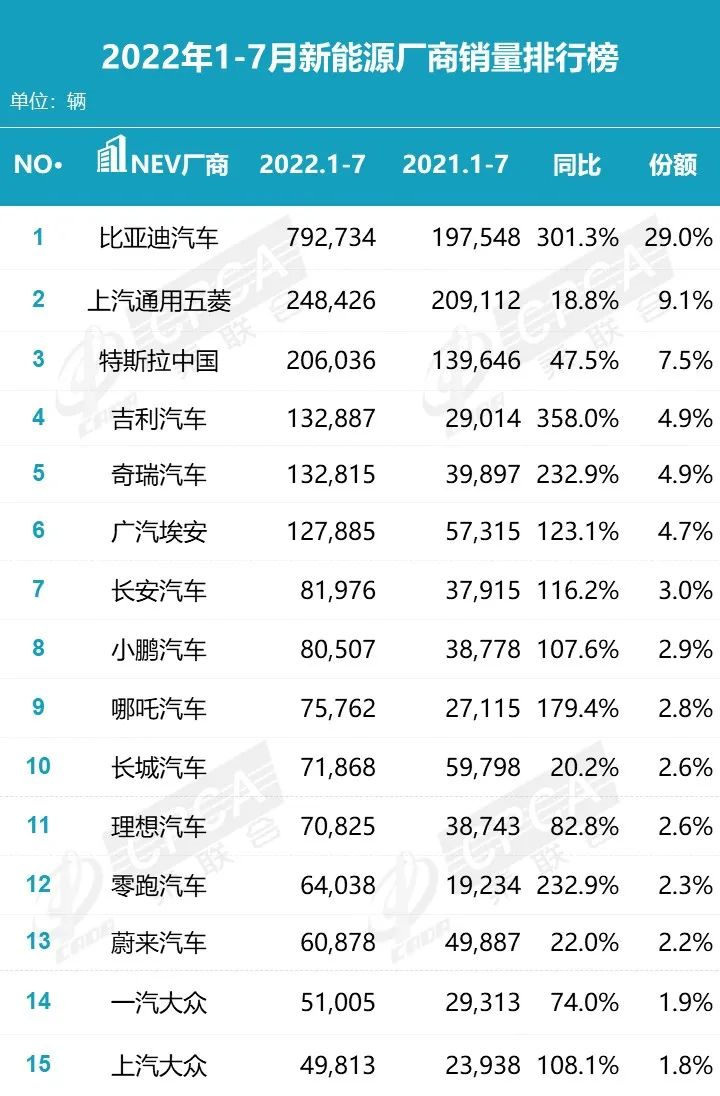
According to the data released by the China Passenger Car Association, seven traditional car companies – Wuling, Geely, Chery, GAC, Volkswagen, Changan and Great Wall – all reported monthly sales of over 10,000 NEVs.
From the data, we can see that the number of companies with monthly sales of over 10,000 vehicles is slightly lower for new forces than for traditional car companies. Moreover, the difference in absolute sales volume is greater, with only Wuling’s NEV monthly sales exceeding 30,000 vehicles. Meanwhile, the best-selling NEV company among new forces only had a monthly sales volume of 11,500 vehicles.
However, new forces have advantages of their own. In the high-end auto market priced above RMB 200,000, NIO, Xpeng and Li Auto have carved out a niche, leaving only Volkswagen from the traditional car companies standing up to the challenge.
This comparison between new forces and traditional car companies has produced periodic answers:
Traditional domestic car companies such as Wuling, Geely and GAC have overtaken new forces in sales of NEVs;
Traditional foreign car companies like BBA, Volkswagen, Toyota and Honda lag behind new forces in sales of NEVs.
As for BYD and Tesla, they have transcended the NEV market itself and are leading the counterattack against the gasoline vehicle market. They are starting to devour the market advantages of traditional gasoline vehicle companies.
The historical advantages of the traditional auto giants are disappearing.
Independent Brands Embrace the “New” Trend
Traditional domestic independent car companies are leveraging the “favorable wind” of new energy vehicles to seize the market share of gasoline vehicles.
Wuling Hongguang Mini EV, representing the A00 micro electric vehicle, has avoided head-on competition with gasoline vehicles and has instead shone in the niche market where gasoline cars have not yet been located, achieving impressive sales results.
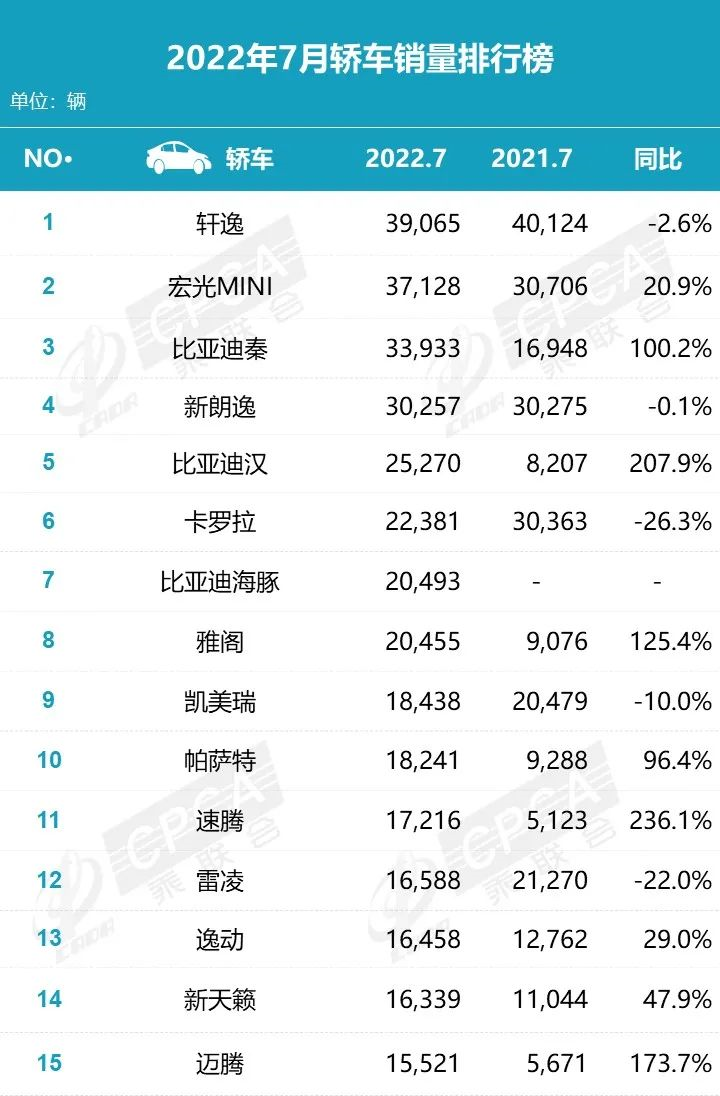
According to data released by the China Passenger Car Association, the Wuling Hongguang Mini EV has surpassed models like Volkswagen Lavida and Toyota Corolla to become the second best-selling sedan for the period of January to July, and is expected to challenge for the top spot in the second half of the year.Another group of companies that have achieved good sales performance with micro pure electric cars are Chery New Energy, Changan New Energy, as well as NIO and SERES, both new emerging automotive companies.
However, in terms of sales scale, the micro pure electric cars of Wuling and Chery are significantly ahead of NIO and SERES. In the A00 segment of the market, traditional domestic brand automakers have completed the overtaking of new emerging automotive companies.
Domestic traditional automakers are relying on new energy and gradually launching counterattacks against fuel-powered cars produced by joint venture brands.
Among them, the most representative automaker is GAC (Guangzhou Automobile Group) which has launched its pure electric car brand Aion and successively launched AION S, LX, V, Y and other models, achieving good sales in the price range of 100,000 to 200,000 RMB.
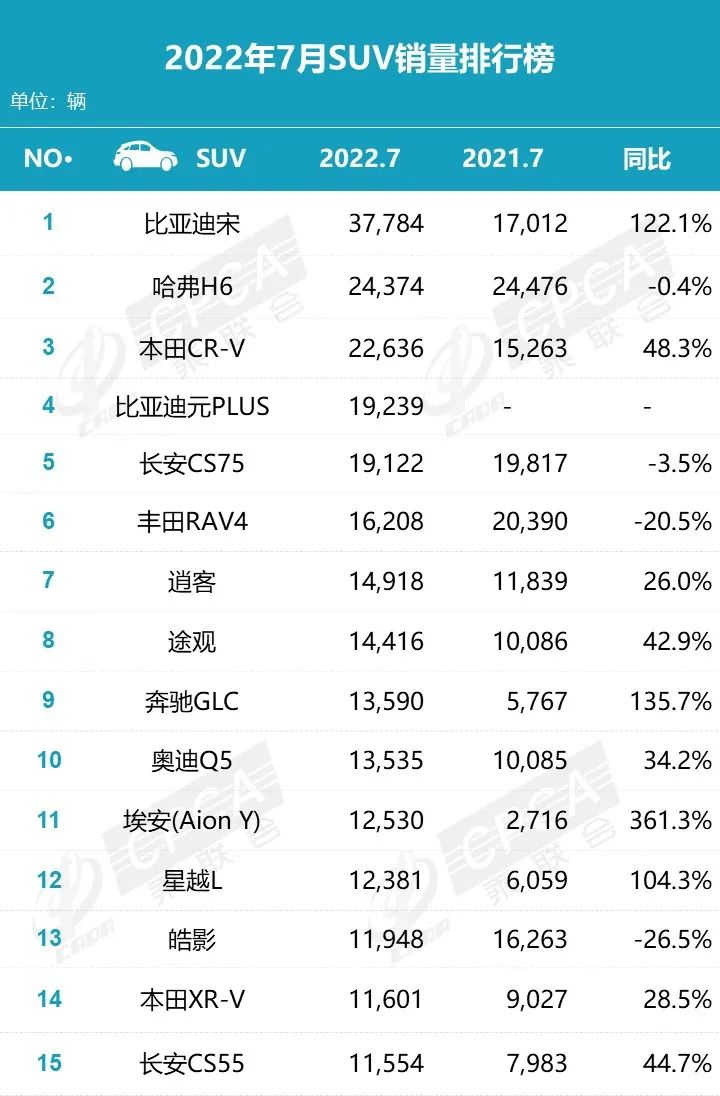
According to the CPCA’s new energy SUV model sales list for July, the AION Y of Aion brand ranked 11th on the overall SUV model list with a result of 12,530 vehicles, surpassing the same level and price fuel-powered car, Honda XR-V and others.
In terms of sedans, the plug-in hybrid model, Geely Emgrand L Hi X, which started delivery in July, sold more than 5,500 units that month and is expected to reach a sales scale of over 10,000 units in August.
The recently-launched Changan Shenlan SL03, which adopts plug-in hybrid technology and pure electric technology, received 10,000 pre-orders in just half an hour and the total number of orders exceeded 60,000. This demonstrates the popularity of the car.
From the cases of Geely, Aion, and Changan, it can be seen that new energy vehicles from domestic traditional automakers have found suitable market positioning in the price range of 100,000 to 200,000 yuan, and consumers are also willing to accept these domestic new energy vehicles.
Domestic new energy vehicles are beginning to exert pressure on traditional car models produced by joint venture brands.
Luxury Automakers Forced into “Huarong Road”
The competition among luxury cars is no longer limited to leather and design, but technology.
The definition of luxury cars has been rewritten, starting from the launch of the NIO ES8. The measuring standards from traditional luxury cars, such as design, materials, and performance, have been updated to technology, services, and design.
Especially in the field of new energy vehicles, consumers have taken high technology as the basis for luxury cars, not optional add-on features.
Being able to operate in-car systems on a smartphone and driving a car like playing video games.
The killer feature of new emerging automotive companies is the intelligent cockpit and driver assistance function. In the cars produced by new emerging automotive companies, the intelligent in-car system is no longer limited to the realization of car functions, but has begun to explore situational interactions of all vehicle occupants.Driving is no longer limited to SAE’s automated driving standard classification, but is optimized for each scenario. In the areas of automatic parking, high-level driver assistance hardware, and other aspects, new players in the automobile industry’s luxury vehicle market have crushed traditional luxury car brands.
The sales at the end terminals of the market can reflect changes in consumer perception.

All electric cars with sales over 200,000 RMB have basic voice interaction and L2 or higher level driver assistance.
Moreover, the stronger the technological power, the higher the sales.
NIO, XPeng, Zeekr and Tesla, BYD’s cars are equipped with the Qualcomm 8155 intelligent car chip or equivalent computing power car chips, which support 5G vehicle networking and other functions. Sales have already exceeded those of BBA and other traditional luxury car brands.
Specifically, in the EV market above 400,000 RMB, NIO is the only brand with monthly sales exceeding 1,000 vehicles. In the 300,000-400,000 RMB price range, the sales of Tesla and NIO exceed BBA. In the 200,000-300,000 RMB price range, the sales of XPeng P7 and Zeekr 001 exceed the total sales of Volkswagen ID6.
It is evident that Chinese brands have already redefined luxury brands with technology.
The failure of traditional luxury car brands indicates that there is lag in their perception of user demand.
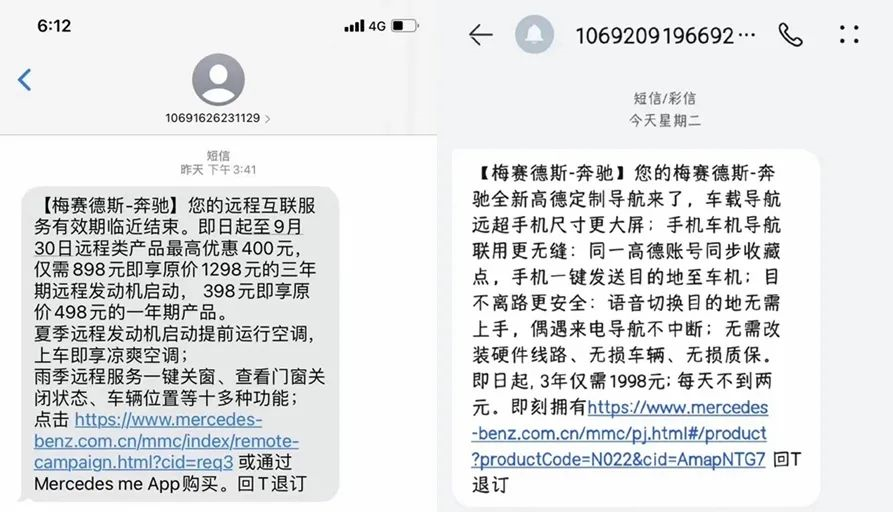
New players in the automobile industry understand Chinese consumers better, and have overwhelming advantages in the networking and voice interaction functions of their car systems. The lagging market feedback mechanism of traditional luxury car brands has made their own automotive products a self-defeating product.
On one hand, it is the drag of the internal workings of car companies; on the other hand, it is the genetic factor of independent new energy car brands.
Unable to keep up, traditional luxury car brands have entered a Chinese checker game, stuck between a rock and a hard place in the new energy car market in China.
Moving forward, traditional luxury car brands must recognize the rise of new energy car brands and keep up with the pace of intelligent cars in China. If they take a step back, they may face the prospect of losing the Chinese new energy car market, which is clearly unacceptable.
At present, traditional luxury car brands have not only failed to let “new players run for a while, and traditional car companies will surpass”, but have put themselves in a predicament.
BYD and Tesla are the ultimate bosses
In this wave of electrification and intelligence, there are two auto companies that have risen rapidly, and they are BYD and Tesla.Currently, the influence of BYD and Tesla is not limited to the new energy vehicle market, but also a significant force in the entire automotive industry. All car companies must think about how to face them.
In terms of sales, both BYD and Tesla’s products rank high in the sales charts, whether it’s sedans or SUV models.
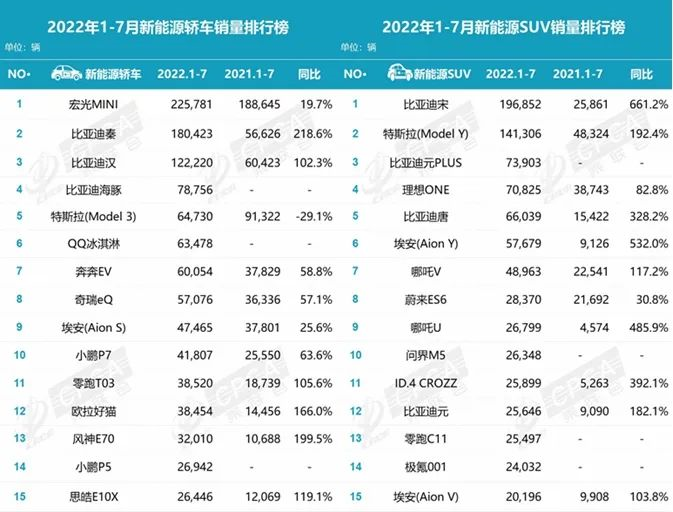
In the first half of 2022, BYD’s sales exceeded 640,000 vehicles, while Tesla’s global sales exceeded 560,000 vehicles. It is expected that the sales scale will exceed one million vehicles for the whole year, making it an enterprise that sells over one million new energy vehicles. The cost advantages brought by the scale are far ahead of other car companies.
In terms of product planning, BYD is deeply rooted in electrification and has a significant product line in both plug-in hybrid and pure electric categories. By the end of 2023, BYD will be a car company that spans from A00-level small cars to D-class sedans, with SUVs, MPVs, coupe cars, off-road vehicles, and pickup truck product lines, which means that BYD will almost enter into every automotive category.
Tesla’s product line is small and exquisite, and each vehicle is highly competitive in its price range. Especially in high-end driver assistance technology, it is ahead of other car companies. Even without using high-cost driver-assist sensors such as lidar and millimeter-wave radar, the driver assistance ability of Tesla Model series vehicles can reach the leading level in the market.
In terms of brand, BYD promotes upwards with its brand continuously breaking through, and has successively deployed DENZA and high-end brands to penetrate the 300,000 – 500,000 yuan and over 500,000 yuan automotive market. Tesla, on the other hand, extends its brand value through horizontal expansion of its product line, launching the CyberTruck pickup truck and Semi trucks, and may introduce a vehicle model below the Model 3 in the future.
In terms of new technology research and development, Tesla is very aggressive, and technologies such as integrated casting and 4680 batteries will be applied to new vehicles first.
BYD’s technological advantages are more comprehensive, with exclusive advantages on battery and electric drive systems. The e-platform 3.0 technology of pure electric vehicles will develop towards software directions such as BYD OS. The DM-i technology of plug-in vehicles will launch its second generation in 2023, with lower energy consumption and more powerful driving ability.
The snowball effect also began to appear in BYD and Tesla, and they are starting to expand production using their existing sales advantages. By the end of 2023, both car companies will have a production capacity of over two million new energy vehicles.
New forces have a head start. Traditional car companies will find it difficult to catch up after BYD and Tesla have been running for so long and so fast. Unless traditional companies have the ability to change the rules of the game, they will ultimately find it difficult to catch up and can only remain as followers.## Rethinking the Definition of “New” Forces in the Automotive Industry
It is a false proposition to discuss the notion that “new forces in the automotive industry can lead the race for a while and that traditional carmakers could catch up with their efforts.”
Firstly, the definition of new forces in the auto industry has evolved and differs from that of three years ago. If carmakers without capacity for building fuel-powered cars are considered new forces, then most automakers will lack capacity in this regard in the future, which means all carmakers will become new forces?
Secondly, the transformation of traditional carmakers takes time, and there are different stages to their effort. Short-term perspectives alone cannot suffice to assess this shift. With the exit of subsidies and tax exemptions for new energy vehicles, the competitive situation in the auto market will undergo significant changes. Will the products of new forces automakers continue to maintain its superiority when they reach an annual sales volume of one million units?
Thirdly, as sales of new energy vehicles continue to grow, will the construction of charging piles and energy supply networks keep pace to meet the demand or become bottlenecks for the growth in sales of new energy vehicles?
In summary, the boundary between new forces and traditional carmakers has become increasingly blurred, and competition between automakers is no longer confined to the differences in power form. Production scale, intelligence, power battery capacity, chip technology, car-owner services, charging networks, and other fields in and around automobiles will be key areas of competition in the future.
In conclusion, both traditional carmakers and new forces will face all-round competition in the future. The concept of new forces in the auto industry will gradually fade unless its definition changes.
It is time to redefine “new” forces.
This article is a translation by ChatGPT of a Chinese report from 42HOW. If you have any questions about it, please email bd@42how.com.